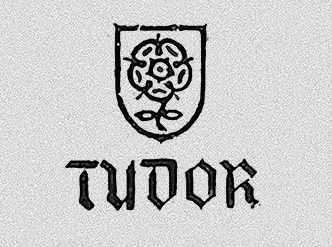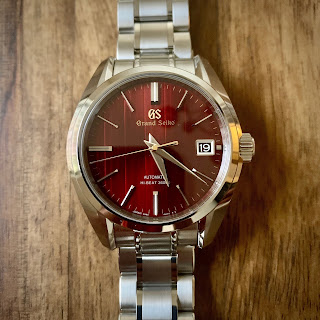The Case for Some Vintage & Modern Tudor Watches - Part 1
When Hans Wilsdorf created the Rolex brand, the goal was always to have the innovations and ideas from Rolex trickle down on a broader scale to the general public and thereby benefit everyone. The idea for Tudor to exist was really a goal. When Tudor was established in 1946, this played the foundation for bringing affordable watches to the masses. Early on, these watches used cases, dials and hands from the Rolex catalog but housed regular off the shelf movements that were typically tinkered with to meet the high standards of performance and finishing set by Tudor and Rolex. However as time progressed soon, Tudor became the test bed for new ideas. Experiments in case design, dial design, unique complications, automatic movements and chronographs, these saw their first stint in the Tudor catalogue before they made it to Rolex. In certain cases this led to completely original and today, much loved vintage pieces that are unique to the Tudor portfolio. Therefore Tudor was always the younger carefree adventurous younger brother to the more formal, business elder brother Rolex. In this article we will explore some of those Tudor pieces that I feel are very unique and collectible among both vintage and modern pieces.
The Tudor rose logo on vintage Tudor watches in my opinion is one of the most beautiful logos to ever grace the face of a watch and that includes the crown of the big brother. However this really was not the first logo for the Tudor watch company. The earliest logo included the word "Tudor" spelled out in a unique Gothic style font with the Strike of the “T” running the length of the logo. An example of this is shown in the picture below. Hans Wilsdorf’s fascination with the British culture and heritage is obvious not only in the brand's name but in the subsequent adoption of the Tudor rose logo for the brand's symbol. The Tudor rose logo through the years have had subtle variations in how it is rendered but in my mind continues to be one of the most beautiful brand logos. The logo then evolved to comprise a combination of the rose and the shield until the rose was completely dropped off for a modern version of the logo that just has the Shield.
Tudor Big Rose (1950’s-1960’s) - Among the watches that bare the Tudor rose logo, the model often called the big rose is one of my favorites and is unique among the early Tudor watches. These watches get their name from the striking large applied Tudor rose logo at the 12 o’clock position. These watches came in black dials, white dials as well as a unique two tone version where the logo and the indices were applied in gold color whereas the rest of the watch was in steel. These big rose models of the vintage Tudors are very collectible but of those the early manual wind versions that have a dial with a cross hair, in good conditions are particularly unique. These watches came in both manual wind and automatic and the reference numbers they typically came in are 7934, 7962 and 7966.
Ref. 7934 - Manual wind, cross hair dial, no date
Ref. 7962 - Self winding (automatic), sometimes cross hair dial, Date or no date models with or without magnification
Ref. 7966 - Self winding (automatic), no cross hair dial, Date or no date models with or without magnification
 |
| Examples of the Tudor Big Rose dial with and without cross hair. |
Tudor Oyster Prince (1950’s) - The Tudor oyster price spanned decades and is one of the most popular and widely produced watches in their portfolio. The particularly interesting watches among those I feel are the models from the 1950’s. Just as the Rolex explorer had its claim to fame as the watches that accompanied Sir Edmund Hillary and Tensing Norgay to the top of Mt. Everest in 1953, a year earlier (1952) the Tudor oyster price was strapped on the wrist of 26 members of the British North Greenland Expedition (B.N.G.E) for the next 2 years. These were unmodified off the shelf automatic watches that constantly experienced temperatures from 70F down to -50F and in icy, damp conditions. They performed flawlessly and have since gained a cult like status for their capability. The aesthetics of the watches from this era adds to the beauty of these pieces. The watches came in a 34mm case with a reference 7809 or 7909 and house a Tudor modified movement from Fabrique d’Ebauches de Fleurier. The serial numbers of the watches worn during this period were around 50xxx-70xxx. The of this era typically came in 3 different dial variations. A dial will all indices, and explorer still dial with 3-6-9-12 of the dial and an all Arabic numeral dial. They typically stated “rotor, self winding” at the 6 o’clock position. A watch from this era in good condition is truly a stunning piece of history.
Tudor Advisor (1950’s-1960’s) - The Tudor Advisor is a watch I truly lust upon. These are mechanical alarm watches which were all the range in the 50s. These watches typically had two crowns, one to set the time and wind the main spring that it powered and the second to wind a second spring that operates a hammer to strike a post and cause the alarm to sound at the set alarm time. The alarm watch was unique to the Tudor range and there never was anything similar within the Rolex brand. The credit for the first alarm watch goes to Vulcain who developed a model called the “cricket” which gained widespread popularity in the 50’s. Soon JLC, Hamilton and Tudor among others followed suit with their own alarm watch creations. The Tudor alarm watch had a reference number 7926 and housed a Adolph Schild manual-winding caliber 1475. The original two tone dial versions that inspired the new heritage Advisor are among the rarest. Other rare versions include ones with a cross hair, black dial versions and the explorer dial 3-6-9-12 versions. All these watches carried the rose logo and came with a variety of applied indices, hands and dial combinations. Only a few thousand of these references were made and finding one in a good condition is getting harder these days. They have grown quite popular and prices are steadily creating up.
 |
| An example of one of the very rare two tone explorer dial on the original Tudor Advisor. |
Tudor Advisor (1970’s) - The original Tudor advisor was followed up the Ref. 10050, release in 1969 and remained in production until 1977. This time around, reflecting the changing style of the 70’s, Tudor replaced the case from an Oyster case to a more traditional alarm case similar to those used by other brands. The hands were replaced with stick hands and the logo on the dial had changed from the rose to the shield. The alarm sounds was amplified by using the casebook itself, a technique commonly used by most other watches in this period. This watch came with unsigned crowns and a Caliber 3745. These references in my opinion are even rarer that some others particularly the ones with a black dial.
 |
| An example of the Tudor Advisor Ref. 10050 on a black dial with stick hands and the shield logo. There is no other watch in either the Rolex or the Tudor catalog with such a case. |
Tudor Ranger (1960’s) - If you were ever fascinated by the Rolex Explorer 1 Ref.1016 model and were looking for an alternative, not far from the family the Tudor ranger is a great option. Just like the explorer it shares certain design traits such as the lume filled explorer 3-6-9-12 black dial, similar case and lug design etc. On the other hand the ranger model sometime also came with a date window and since this watch spanned several decades it also came under various references such as such as 7964, 7966, 7990, 7992, 7995, 7996, 90330 or 90220. For a long time the range also operated as a sub brand to the oyster prince. These watches remained in production from the late 60’s up until 1988.
Before you go jumping on eBay looking for one of these there is one thing you must know. The Tudor ranger now has the notoriety of being one with the most fakes and franken watches floating out there. Re-lumed dials, wrong logos, wrong hands, wrong case you can find them all so I have put together a few thing to look out for when you buy this watch in the image below.
 |
| Things to look out for on a Tudor Ranger dial. |
Tudor Submariner (1960s) - The Tudor submariner was really the next step once Rolex introduced the original submariner in 1953. The first Tudor submariner (Ref. 7922) was launched in 1954 and was nearly identical to the Rolex submariner with the exception of the dial showing the Tudor rose logo and the modified caliber 390 from Fabrique d’Ebauches de Fleurier, similar to the movement used in the Tudor oyster prince. This was followed by the reference 7923 which is considered one of the rarest Tudor watches. This was the only dive watch in the Tudor or the Rolex family fitted with a manual wind movement and had a very simple dials that just said Submariner and had the Tudor logo. This watch was followed by the 7924 which had a 200m water resistance and continued using the caliber 390 movement. All three of the above references had a very short run so finding one in good condition is definitely a tall order. Following this watch Tudor launched the reference 7928 which was the equivalent to the references 5512 and 5513 from the Rolex catalog. Good examples of these watches are available and one needs to be diligent in getting hold of the right piece. These watches continued using the caliber 390 movement. All of the Tudor submariners had a design language and look very similar to that of the Rolex and could be easily mistaken for one in appearance if not for the logo. After this the Tudor submariner started changing and that will be discussed in part 2 of this blog starting with the “Tudor Snowflake”.
Hope you all enjoyed this article. Please share this post, subscribe to the blog if you liked it and share a comment if you have a chance.
 |
| Vintage Tudor Submariner Reference 7928 (image from BOB's watches) |





Comments
Post a Comment